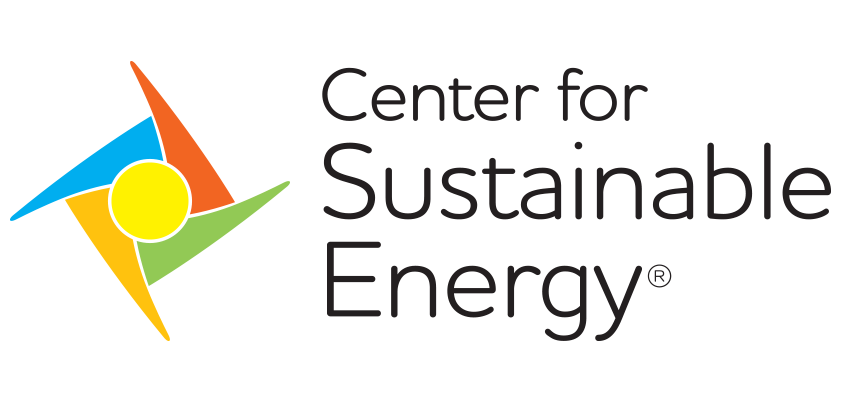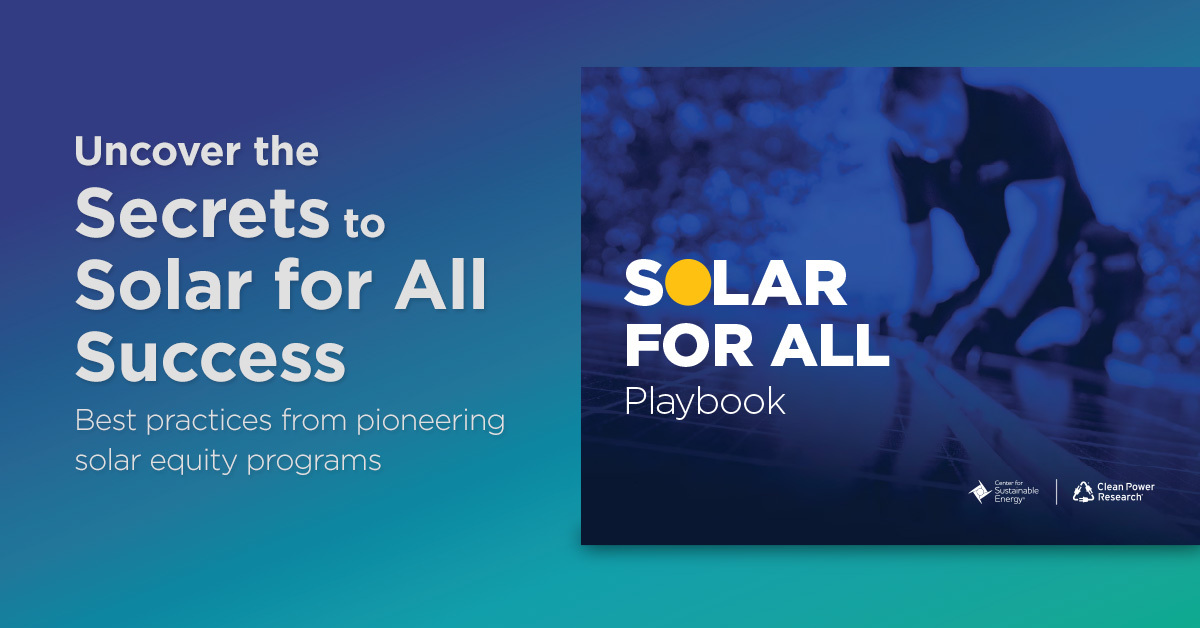5 Key Steps for Successful Solar for All Equity Programs

States, cities, territories and tribes that have won federal Solar for All grants will want to launch programs that rapidly deliver on the promise of expanding equitable access to solar power and energy storage to their low-income and disadvantaged communities.
Expertly designed programs will fully engage stakeholders and be efficiently implemented with accountability and transparency on results.
Based on the Center for Sustainable Energy’s and Clean Power Research’s combined 50+ years designing, administering and creating software for large-scale solar and energy storage programs nationwide, here are five key elements of a successful Solar for All program.
1. Start with inclusive, data-driven design
A program to equitably expand access to solar needs to have ongoing engagement with the community from day one. It calls for a transparent, collaborative and continuous engagement process that ensures community needs are built-in, yielding better program design and more invested program participants. Solid data is critical to inform decision-making on which geographic areas to target, what income-eligibility standards to use and how to set incentive amounts that will move applicants to action and activate market players.
Best practices include:
Involve the community. Successful Solar for All programs will require collaborative and continual two-way communication with low-income, disadvantaged and tribal communities – especially at the start. One way that CSE ensures program design reflects the challenges of people the programs serve is to enlist community-based organizations (CBOs). CBOs are trusted by their communities and raise awareness of program benefits in ways that connect and resonate.
Focus on key geographic areas. While Solar for All prescribes income qualifications and geographic areas, these parameters can be refined to identify disadvantaged and low-income communities and households at greater risk from climate change impacts or with historically higher total energy burdens (costs of power, heat and transportation). For example, the San Diego Solar Equity Program uses the city’s Climate Equity Index to identify income-qualifying homeowners who face the highest risk from climate change, yet historically have had lower access to renewable energy.
Streamline income eligibility. Income-based programs can be intimidating when they require complex and sensitive income tax information and verification. Instead, base eligibility on enrollment in existing income-eligible programs such as the Supplemental Nutrition Assistance Program (SNAP) or Low-Income Energy Assistance Program (LIHEAP). An added benefit of coordinating with existing programs: The U.S. Department of Health and Human Services confirmed in a June 2023 letter that LIHEAP funds can be used to pay for community solar subscriptions, supporting Solar for All goals.
Determine inclusive incentive levels and application processes. Incentives should cover most equipment and installation costs. It’s also a good practice to consider ways to expand access for hard-to-engage households through higher incentive amounts and/or an earlier, longer or special application window.
2. Clearly communicate to intended participants
The participants and stakeholders in your Solar for All program – disadvantaged and low-income community members, contractors, property owners and community groups – have unique perspectives that require thoughtful communication strategies. Enlisting a program administrator experienced in both managing solar equity programs and conducting marketing, education and outreach (ME&O) in equity communities can raise awareness of Solar for All programs and bridge communication gaps to move customers from awareness to action.
Best practices include:
Create a strategic marketing plan. A detailed ME&O plan, created with local stakeholders and built on data and experience, should outline strategies for using channels and messaging appropriate for each audience to encourage participation.
Develop a resource-rich, user-friendly program website. The website should address the needs of different participants, including property owners, contractors, tenants and job seekers. Resources can include educational toolkits, checklists, how-to videos and maps. CSE created an online Eligible Property Map for California’s Solar on Multifamily Affordable Housing (SOMAH) Program that filters by disadvantaged community status, utility service territory and other factors to make it easy for property owners to see if their housing qualifies, for contractors to find potential customers, and for stakeholders to see the program’s reach.
3. Develop a streamlined application process leveraging automation
Agencies distributing solar rebates will need to efficiently administer their programs, facilitate transparent communication, meet deadlines and maintain auditability. Taking advantage of workflow automation can streamline the solar rebate process from end to end.
Best practices include:
- Create an easy-to-navigate applicant portal informed by stakeholder input and successful solutions used by similar programs.
- Use conditional logic that guides applicants through the process with automated communications, transparent views and integrated e-signatures.
- Implement flexible software tools with out-of-the-box workflow capabilities and self-service, “no-code” design features to quickly launch and update programs.
Clean Power Research’s PowerClerk® has processed more solar rebates than any other software platform. It is used by over 75 utilities and energy agencies across 36 states, including California’s SOMAH Program.
4. Ensure robust, transparent data reporting and analysis
Meeting Solar for All data reporting and metrics requirements, like demonstrating a minimum of 20% savings on a participating household’s electric bill, can be accomplished by planning for data collection during program design and using robust software.
Best practices include:
- Use configurable software with built-in tracking of milestones and granular data.
- Provide public dashboards showing program metrics and progress.
- Analyze data to project program budget spend rate and inform program improvements.
5. Engage a third-party program administrator (PA)
An experienced PA, selected through a competitive request for proposal process, can design and launch a Solar for All program incorporating the above best practices. A PA should bring:
- Expertise developing pioneering solar and energy storage equity programs.
- A team that can provide program design, marketing and outreach, secure online application portal development, customer service, technical assistance, incentive processing and data tracking and reporting.
- Cost- and time-saving efficiencies to speed program launch.
- Experience partnering with community-based organizations to ensure programs are community- and equity-centered from the start.
Government employees can get a copy of our Solar for All Playbook for more tips on launching a successful solar equity program.
Download the playbook here.


